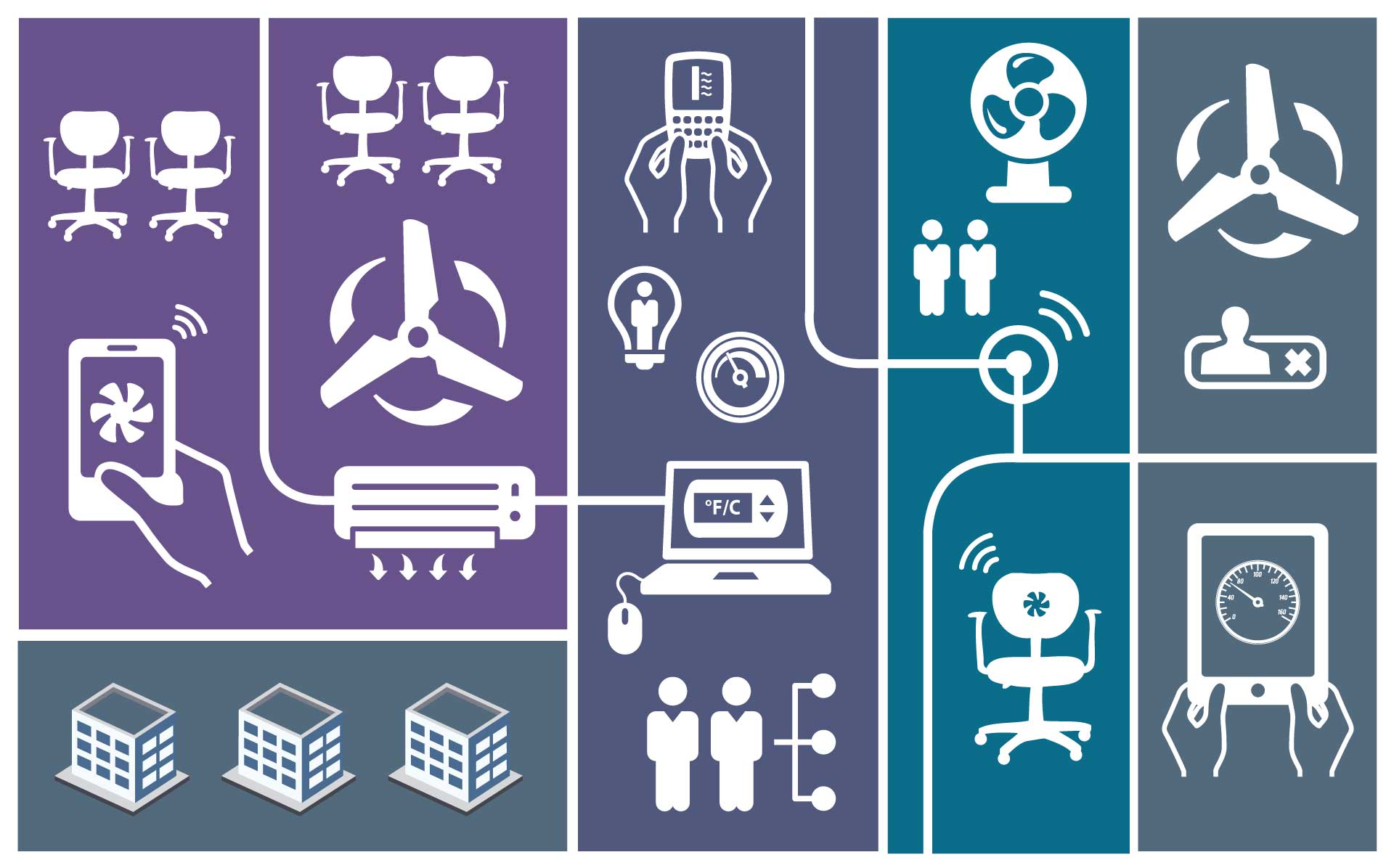Developing a personal comfort ecosystem with a control hub integrating with multiple devices and building management systems.
Status: Current
Funding Sources: California Energy Commission CBE Industry Partners
Project Objective
The goal of the project is to overcome the barriers to mainstreaming personal comfort devices (PCDs) in commercial buildings to improve comfort, save energy, and provide resilience by: (1) empowering occupants to control their comfort enabled by a local control hub, (2) enabling facilities managers to easily reduce or shift energy consumption and reduce comfort complaints through PCD-energy management coordination and (3) facilitating architects and engineers in specifying PCDs in new or retrofit applications.
Significance to Industry
California’s energy goals include rapidly reducing greenhouse gas pollution that comes from the HVAC systems in commercial buildings and improving grid resilience by shifting demand peaks. While PCDs have a positive pilot-scale track record ensuring individual environmental comfort, increasing resilience, and reducing HVAC energy consumption, they have not gained much traction in the market. Barriers include limited availability of efficient PCDs that are convenient for office use, lack of knowledge about how to specify PCDs in commercial buildings, the need to involve various stakeholders in accepting, adopting, and maintaining PCDs, and lack of integration with building controls. Few architects, engineers, and real estate managers understand the full promise of PCDs or how to specify them for their applications. Although PCD’s are generally understood to increase occupant comfort, it is not widely realized how the presence of PCDs can enable energy savings through expanded setpoint ranges. Coordinating PCDs with plug loads and building control systems can further reduce energy use and also shift loads in response to grid needs.
Research Approach
This project builds on CBE’s experience developing and testing PCDs, partnering with the California Institute for Energy and Environment (CIEE) and bringing in additional support from team members at TRC, Normal Software, ARUP, Lawrence Berkeley National Lab and the University of Notre Dame. This project has several key tasks: First, we will develop and test at least two new PCDs using a new nanostructured carbon heating fabric, thermoelectric devices for hand warming and cooling, and an infra-red LED device for radiantly heating hands efficiently. Next, we will develop a ‘Personal Control Hub’ with sensors, fan, and network including automated thermal preference learning. This will create customizable ‘Personal Control Ecosystem’ that integrates the PC Hub with other PCDs, other devices, and/or building management system, which we will test. This effort will culminate in a web-based PCD Design Guidebook for HVAC engineers and real estate managers to specify the best PCD for their application and context.
These devices will be developed with an open-source means of connecting them, which can reduce and shift building HVAC use by providing low-energy thermal comfort. Such a system can also address a wide variety of contexts in commercial buildings: zones with different heating/cooling needs, low and varied occupancy, turn-over/churn, a variety of work styles (sitting, standing), and a wide range of market applications. We expect that this multi-year project will create new devices with supporting evidence of benefits, that will be readily adopted by industry.
The main technical specifications for the new PCDs are power efficiency (20-100 W target), design efficiency (at least 60% reduction in number of TE nodes), and safety (temperature well below the skin pain threshold of 110°F). The technical specifications for the PC Hub are power efficiency (less than 20 W at maximum cooling), occupancy detection efficiency (>99% detection), temperature sensor accuracy (+/- 0.5F), thermal comfort prediction (>95% accuracy). Software specifications include closed loop occupancy detection and PCD control within the PC Hub, and closed loop control of zone ventilation and temperature as well as other PCDs, devices and plug loads through the PC Ecosystem.

